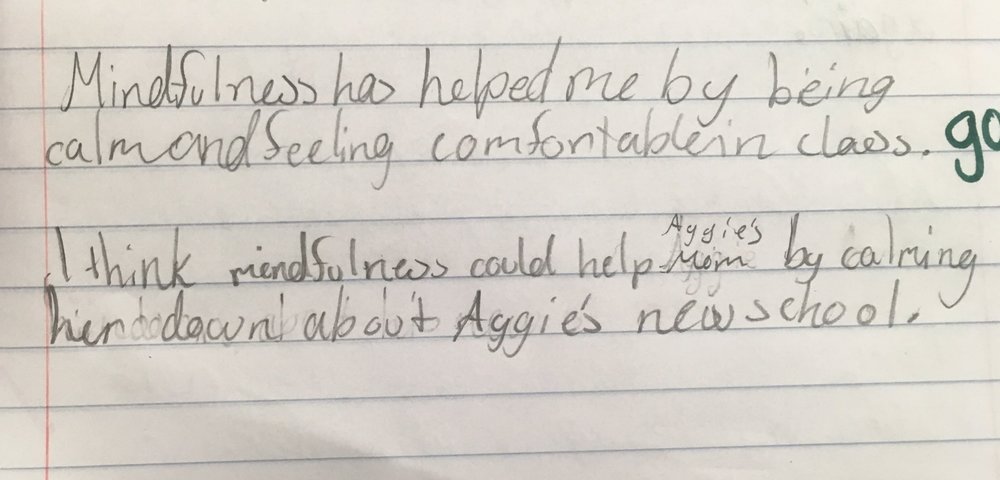Have you ever taken a shower, and when drying off thought, “Did I even wash my hair?” because you were so focused on rehearsing that crucial conversation you are supposed to have with your boss that day? Or have you ever driven somewhere thinking about the millions of things you have to do just to arrive at your destination, and realize you don’t remember the drive, that you were on complete autopilot? That’s ok. Me too. It’s not your fault, or mine. Our brains are preconditioned to stress over the past, or worry about the future, instead of focusing on the present moment. Research shows us that this stress is really bad for our health, but also that there’s a lot we can do to change the brains we were born with, even into adulthood.

First, in the lecture The Science of Mindfulness Ronald Siegel explains why and how our brains developed to always think about the past or future. “Imagine our ancestor Lucy was looking at some bushes, and spied a beige shape. She could have made two possible mistakes. The first mistake would be to think, ‘I think it’s a lion, when it’s actually a beige rock.’ The second mistake would be to think, ‘Eh, it’s probably a beige rock when it was really a lion.’ The cost of the first mistake is needless anxiety. The cost of the second mistake is death. So, we evolved to make the first mistake a thousand times to avoid making the second mistake even once. The ancestors that did focus on the moment by enjoying a luscious piece of fruit, or the campfire, statistically, were not our ancestors because they died before reproducing. Our ancestors were the ones that spent each day remembering every bad thing that had happened, and spent much of their lives anticipating more trouble in the future. This is the mind they bequeathed to us.” (thanks!) Therefore, our minds were not designed to be focused on the present moment; they were developed to worry, perseverate, anticipate and plan.

Thankfully, today most of us don’t need to worry so much about a lion having us for dinner. We don’t need to think about the past, or plan for the future every minute of each day. We have the luxury to enjoy the moment. In fact, research shows us that we should do this more often in order to reduce stress. In the past decade, there has been a growing amount of research on neuroplasticity, or the brain’s ability to reorganize itself by forming new neural connections throughout life. Our brain is reshaped throughout our lives by our experiences, and our thoughts. We now know that it is where we choose to focus of our awareness that determines which brain networks are strengthened, and which are weakened, or lost. So, the more we worry, the better we become at worrying. However, if we practice being calm, clear and focused, we can strengthen these networks too.
Mindfulness, or moment to moment awareness, on purpose, without judgment, can help with stress reduction. If practiced often, it will build our capacity for managing stressful situations as they occur. Mindfulness helps create a buffer between the stimulus, and how we choose to respond to it. Stress reduction through mindfulness is wonderful for adults, but also for children. Children who come into the classroom from stressful home environments must calm the amygdala, the part of the brain that responds to stress, before learning will ever occur, according to Paul Tough’s book Helping Children Succeed. If a child’s mind is not calm, then learning is simply not happening.
When I was teaching, I would have no idea which students were walking into my room with calm minds, and who needed some time to become calm. Therefore, I practiced mindfulness with all of my kindergarten through 4th grade students every day at the beginning of class in order to, as I would say, “calm our minds so we can grow our brains.” According to Tough’s research, the environment that teachers create in the classroom is the most important factor to learning. “Just as early stress sends signals to the developing nervous system to prepare for a lifetime of trouble, early warmth and responsiveness send the opposite message: You’re safe. Life is going to be fine. Let down your guard; the people around you will protect you and provide for you. Be curious about the world; it’s full of fascinating surprises. These signals trigger adaptations in children’s brains that allow them to slow down and consider problems and decisions more carefully, and to focus their attention for longer periods” (p. 49). By practicing just 4-5 minutes of mindfulness, we created a classroom environment that was conducive to learning because students felt comfortable and calm, which sent the message to their brains that they were safe, and ready to learn.

Click here to access mindfulness audio for the classroom for students grades K – 12.
